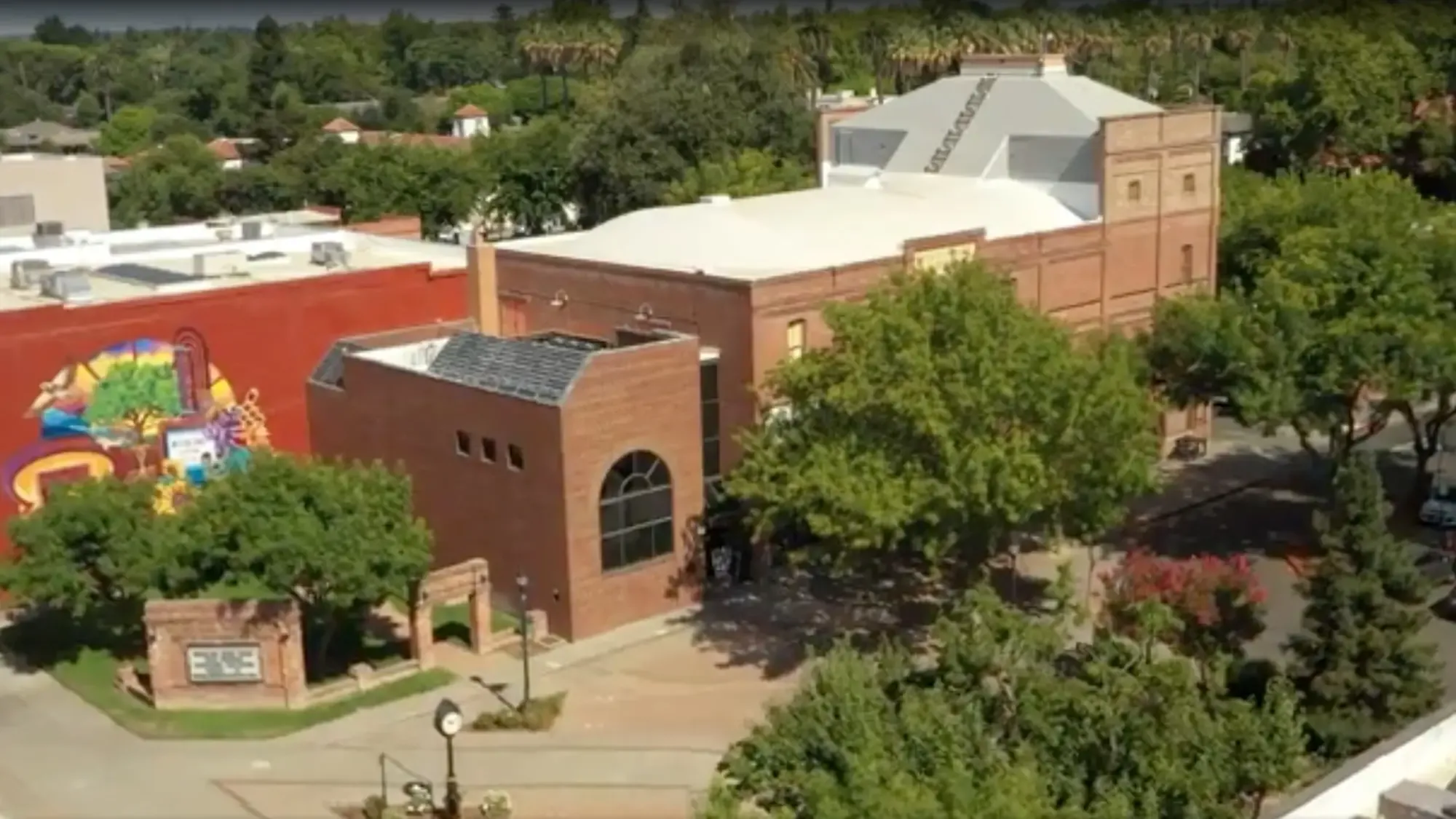Sam Garcia was in her final year at University of California, Davis, when, like many students in their college years, she had not yet identified a clear future path.
Then, through a UC Davis history project, the sociology major discovered historical archives.
Garcia and a group of students’ research into a previously enslaved Black community in Yolo County evolved into a community public service. It also inspired Garcia and five other students to pursue careers in graduate research and education. The undergraduate and graduate students eventually collected enough material to develop elementary school lesson plans and a digital presentation as well as create a display now on view at the Woodland Opera House State Historic Park.
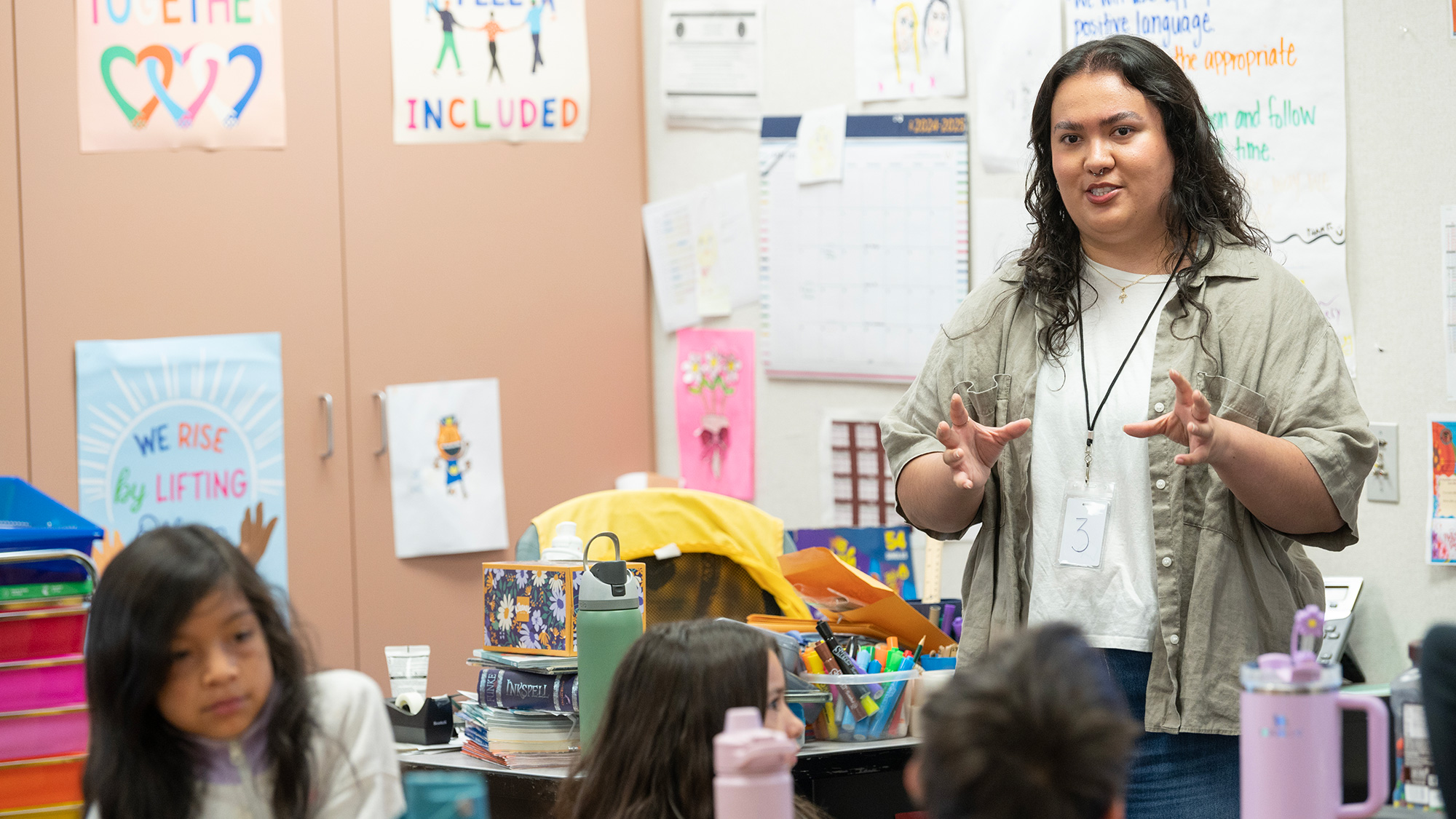
“I didn't realize that there are so many stories to be discovered that can help us better understand our own families, communities and world,” said Garcia, a first-generation college student who graduated this spring. “I hope to continue the efforts in making history more accessible and working directly with people to help establish their own community archives."
Garcia decided her future at the Yolo County Archives. She will begin a UCLA master’s degree program in library and information sciences in fall 2025.
What the students uncovered — after looking at four ethnic communities from the area — were photos, maps and stories of a little-known settlement of African American people previously enslaved, and their descendants, who lived in Woodland in the middle 1800s and early 1900s. The students learned that enslaved persons had been brought with their enslavers to Yolo County, even though California was legally a free state.
Under the leadership of Cecilia Tsu, associate professor of history at UC Davis, students whose fields included sociology, history and English in 2024 began delving into Yolo County history. Tsu, a faculty advisor for the California History-Social Science Project, or CHSSP at UC Davis, sought with her cohort of students to uncover diverse histories of Yolo County to share with K-12 teachers and their students, consistent with the CHSSP’s mission of providing professional learning opportunities for teachers and educational resources for California students.
“To research these histories, we combed through collections at the county archives that included property records, court cases, census records, coroner’s inquest files, newspapers, maps and photographs,” Tsu said.
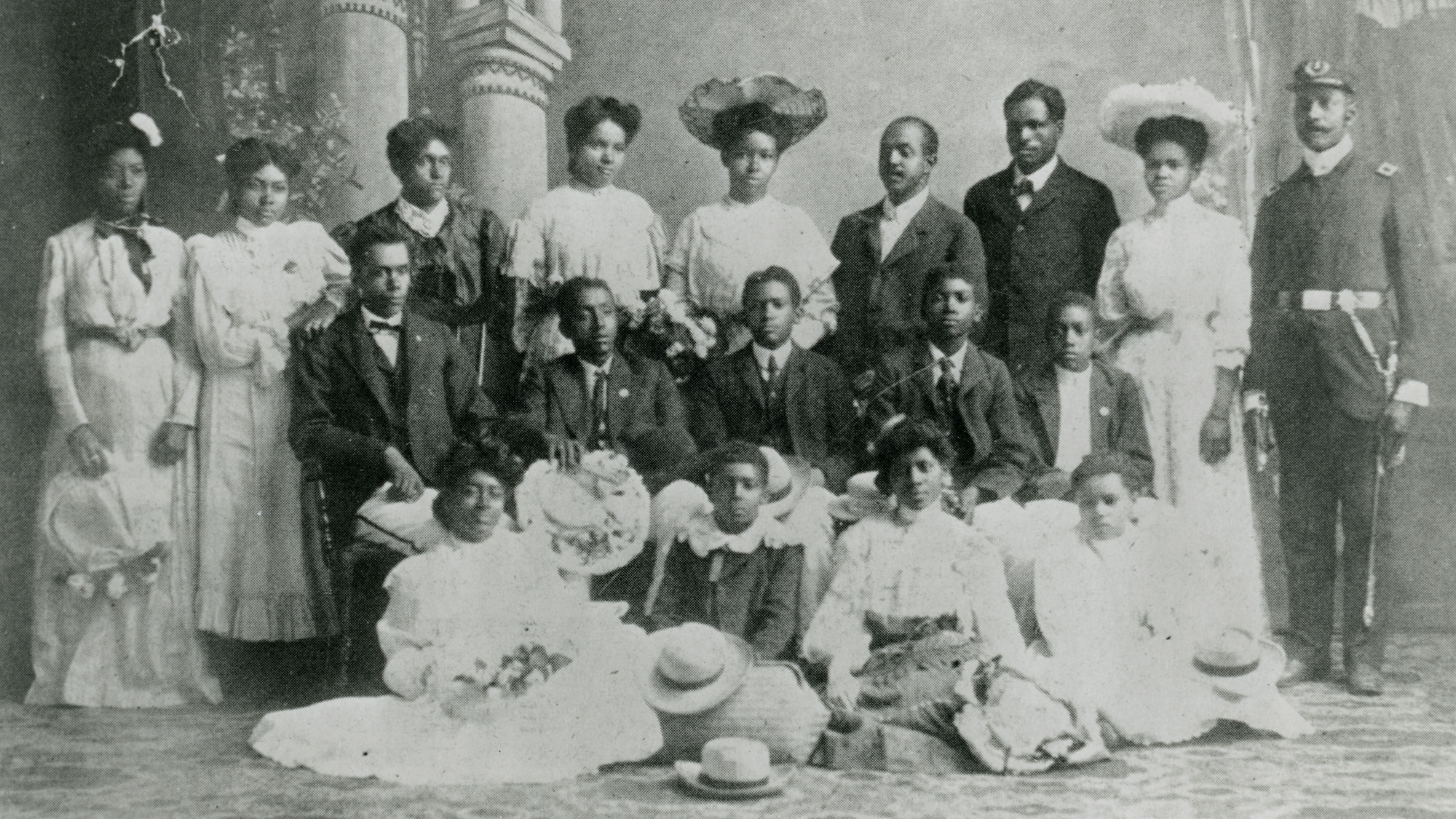
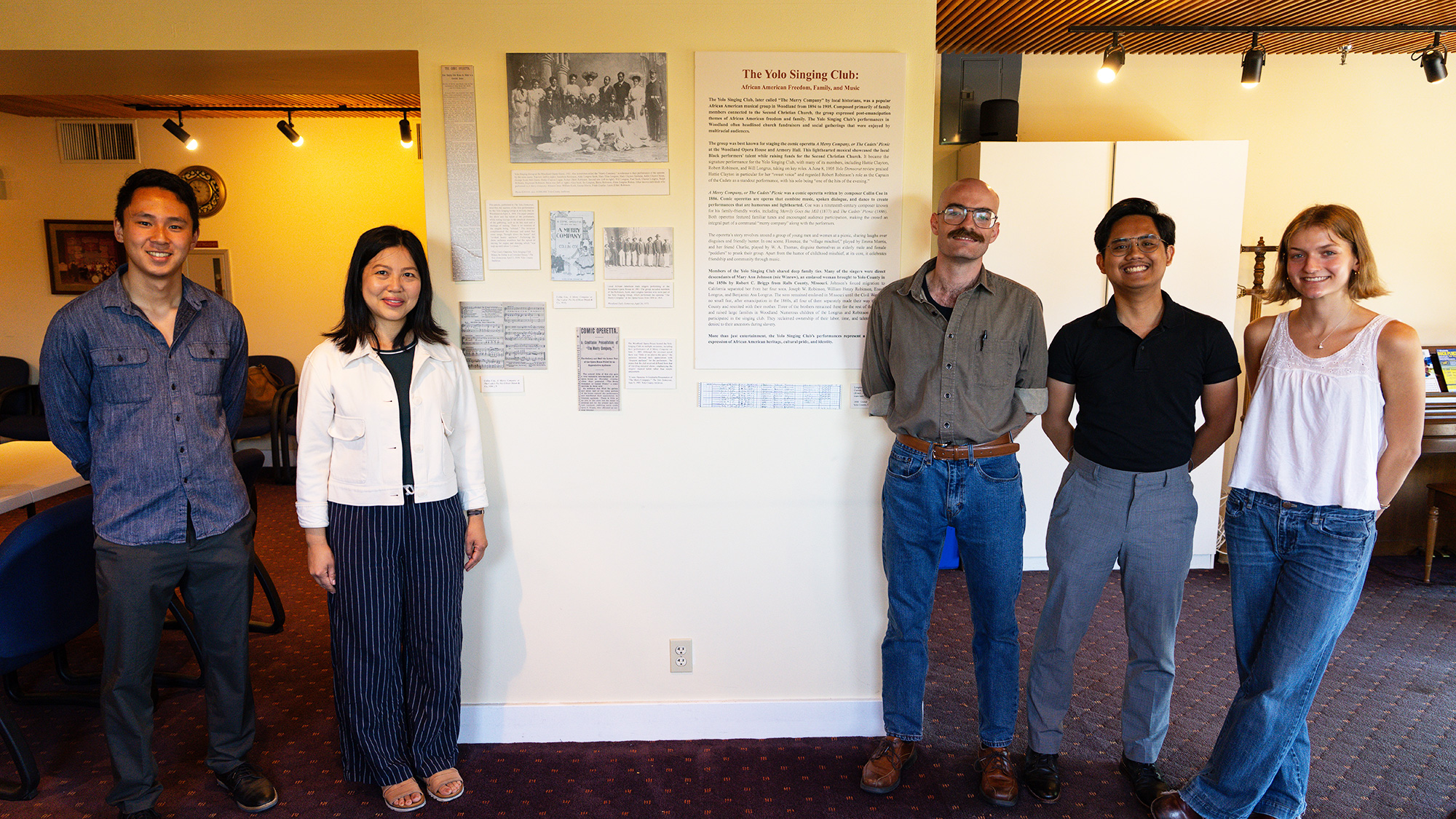
Researching cultural communities in Yolo County history
Students initially identified four potential Yolo County communities to study:
- Chinese immigrants in what was known as “China Alley” in downtown Woodland
- African Americans in Guinda/Capay Valley (which eventually led to an African American community in Woodland)
- Japanese American farmers in Winters
- Mexican agricultural workers working during the World War II era in Yolo County as part of the Bracero Program
Perhaps one of the most compelling finds was the story of the Yolo Singing Club, also sometimes called in historical records “The Merry Company.” Many members were descendants of previously enslaved people who lived in Woodland.
The group performed from 1894 to 1905 at the Woodland Opera House, which operates to this day. A photo of that group has long been on display in the Opera House, along with, in the recesses of the stage, an aged poster promoting a minstrel show. At that time, minstrel shows featured White actors in blackface performing racist caricatures of Black people. Said Tsu, "The Yolo Singing Club’s choice of musical was no doubt deliberate. They selected a lighthearted, family-friendly piece devoid of any racial content that showcased their superb singing and dancing skills."
Black communities in Woodland and elsewhere
California’s Constitution banned slavery in 1849 and the state entered the union as a free state in 1850, but historians have found evidence slavery still occurred throughout the state, including in Yolo County. After the 13th Amendment to the U.S. Constitution, which was ratified in California in 1865, abolished slavery in the United States, the formerly enslaved and their families formed their own churches, schools and communities in Woodland as well as other parts of California. Some of the descendants of both enslaved and free Black people still live in Woodland today.
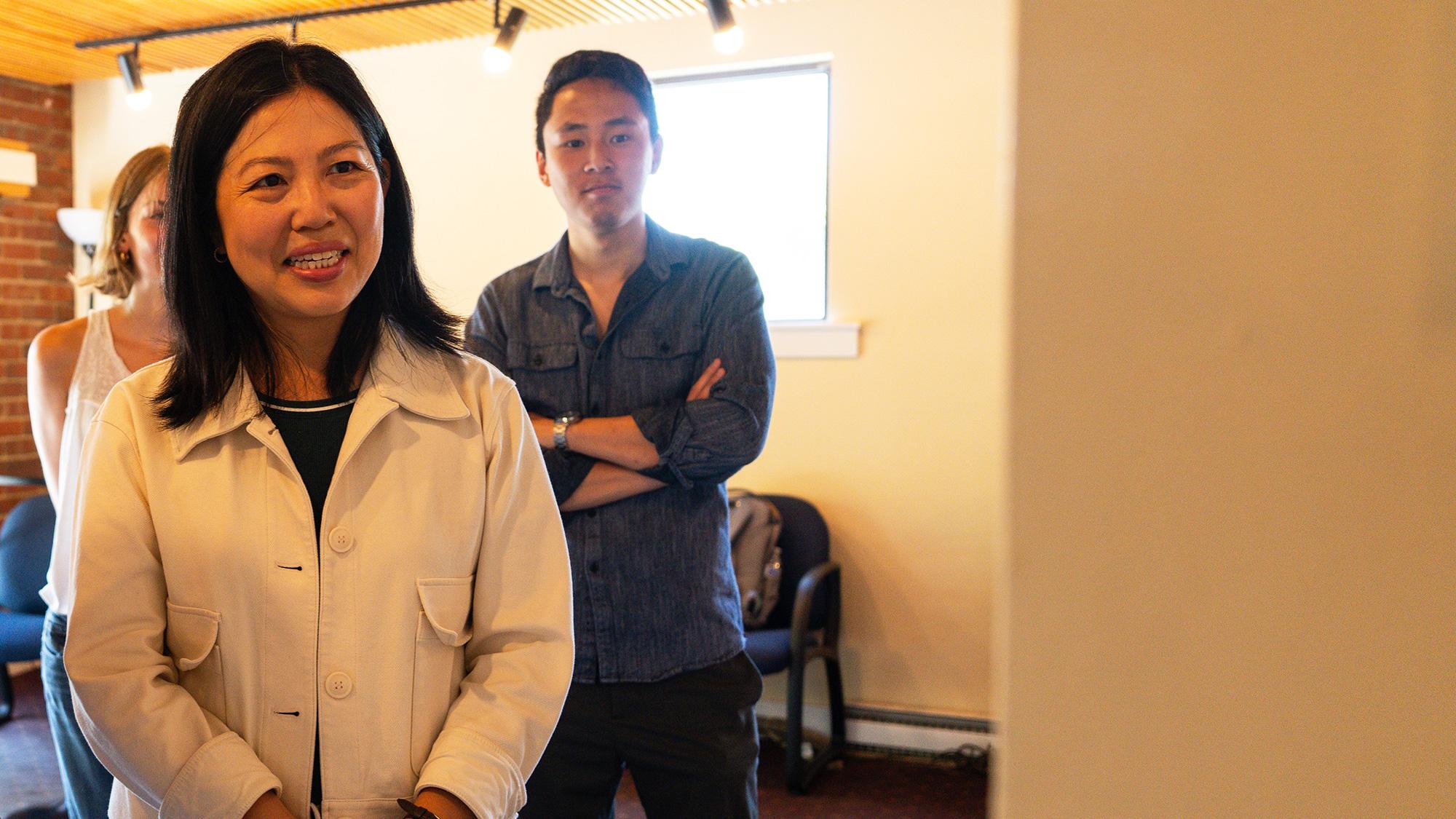
Sareena Crawford, a graduate student working on the project, has delved through the archives and studied some family histories.
“I have grown an incredible respect and love for, and camaraderie with Black Yolo County and want to tell the story with the care and knowledge that has been shared with me by [some of the] descendants,” she said.
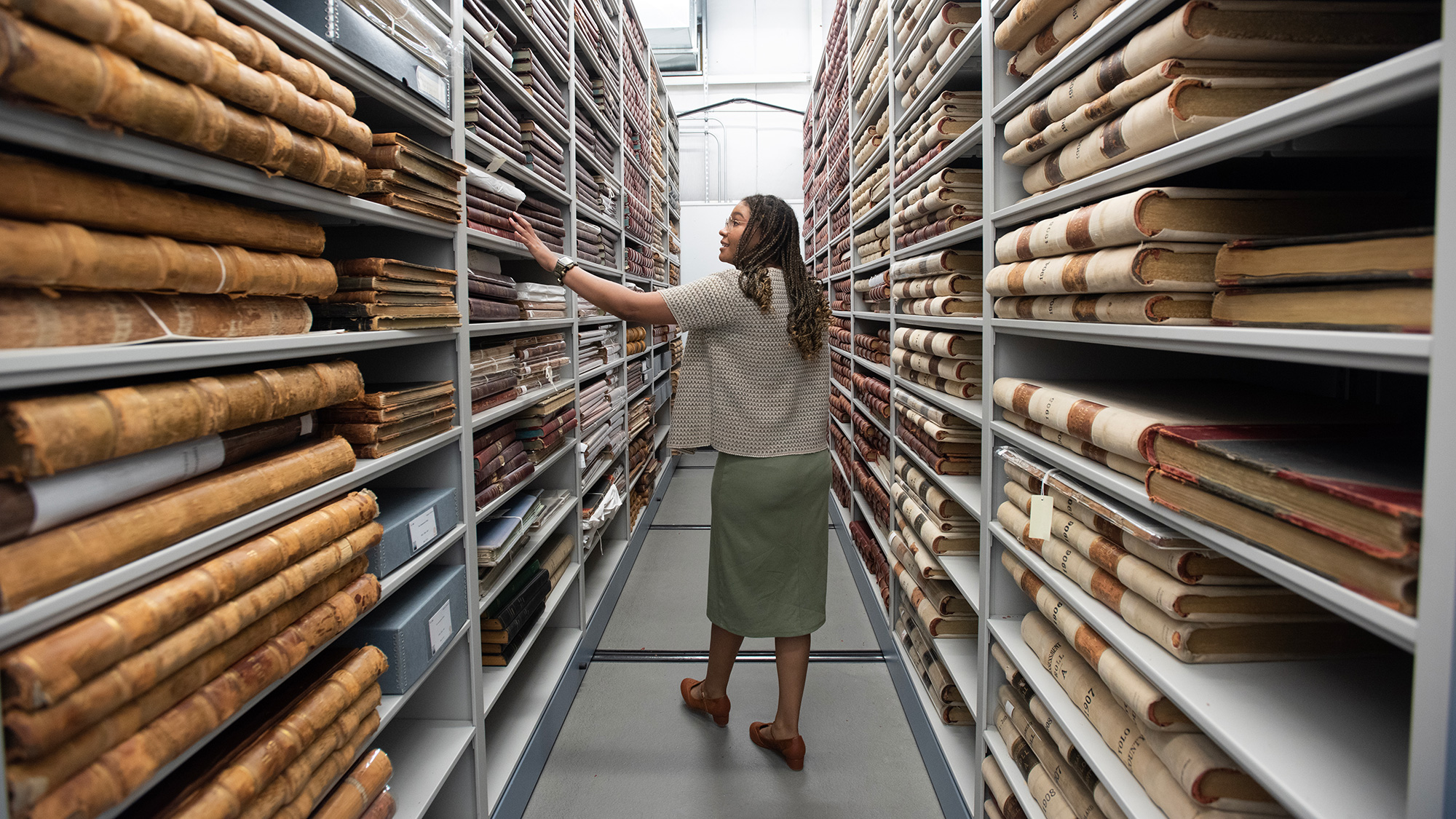
Partnering with the Woodland Opera House
The display on view in the Woodland Opera House is titled “The Yolo Singing Club: Freedom, Family and Music.” Featured in the lounge area of the theater, it debuted in fall 2024 during the annual Woodland Stroll Through History event.
The collection includes fire maps of the community’s housing, historic census materials containing rolls of names of residents, Yolo Democrat newspaper articles touting the group’s performances, an enlarged photo of the singing group, their sheet music and old black-and-white photos of church congregations the members attended at that time.
Dated 1903, the photo of the singing group shows young men and women, with men wearing three-piece suits — one in a military uniform — and women dressed in ruffled dresses, skirts and blouses and hats common in that era. The group performed at the Woodland Opera House and throughout the community. Members of the singing group were members of the Second Christian Church of Woodland, according to archives.
“The story of this African American ensemble was so rich and intriguing that we felt compelled to share it with the Woodland Opera House community,” said Tsu.
Tom Burmester ’01, Ph.D. ’22, executive director of the Woodland Opera House, said he viewed the project as a way to share the voices and experiences of the people who were part of the Woodland Opera House’s past.
“This project takes a meaningful step toward ensuring our past is remembered in all its complexity — and also helps build a more inclusive legacy for the generations who will make the opera house their creative home,” he said.
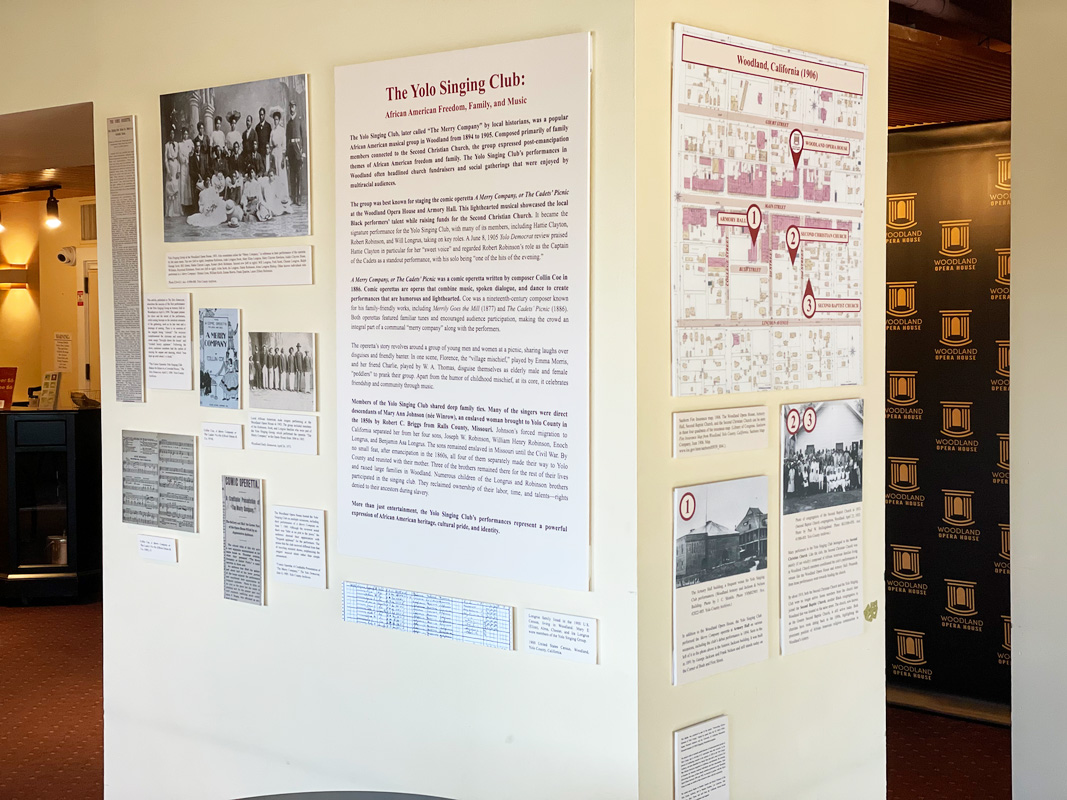
Students take the project forward
Connor Chang and Quinn Chapin, who graduated in spring 2025 — each with degrees in English and history — intend to be middle-school teachers. Both said they are even more committed to that path now after getting practice creating and illustrating lesson plans and a digital presentation on this project. With their student colleagues, they later presented their materials to fourth, fifth and sixth graders in Yolo County. Chang spent hours converting disparate fire maps and census tracts into readable, attractive graphics for the presentation given by the UC Davis students to schools in Davis, Woodland and Knights Landing. His designs and illustrations were also used in the Woodland Opera House display.
The project helped inform the remaining students’ paths, too:
- Marq Mamaril, another undergraduate history student on the project, now works full-time for a private historical consulting firm in Davis.
- Franklin Meyer, a graduate student in history who focuses on the 1970s and ’80s in his own research in pursuit of one day becoming a professor, said he gained a perspective on Woodland’s diverse history through his work on the project. He said he saw the relevance of history for today’s residents of Yolo County and learned to mentor college students and channel their resources.
- Crawford, a history graduate student, wrote a research paper on one of the court cases she discovered. She is now considering expanding her research with descendants’ stories uncovered in this project as well as women who formed Black geographic kin-groups throughout Northern California.
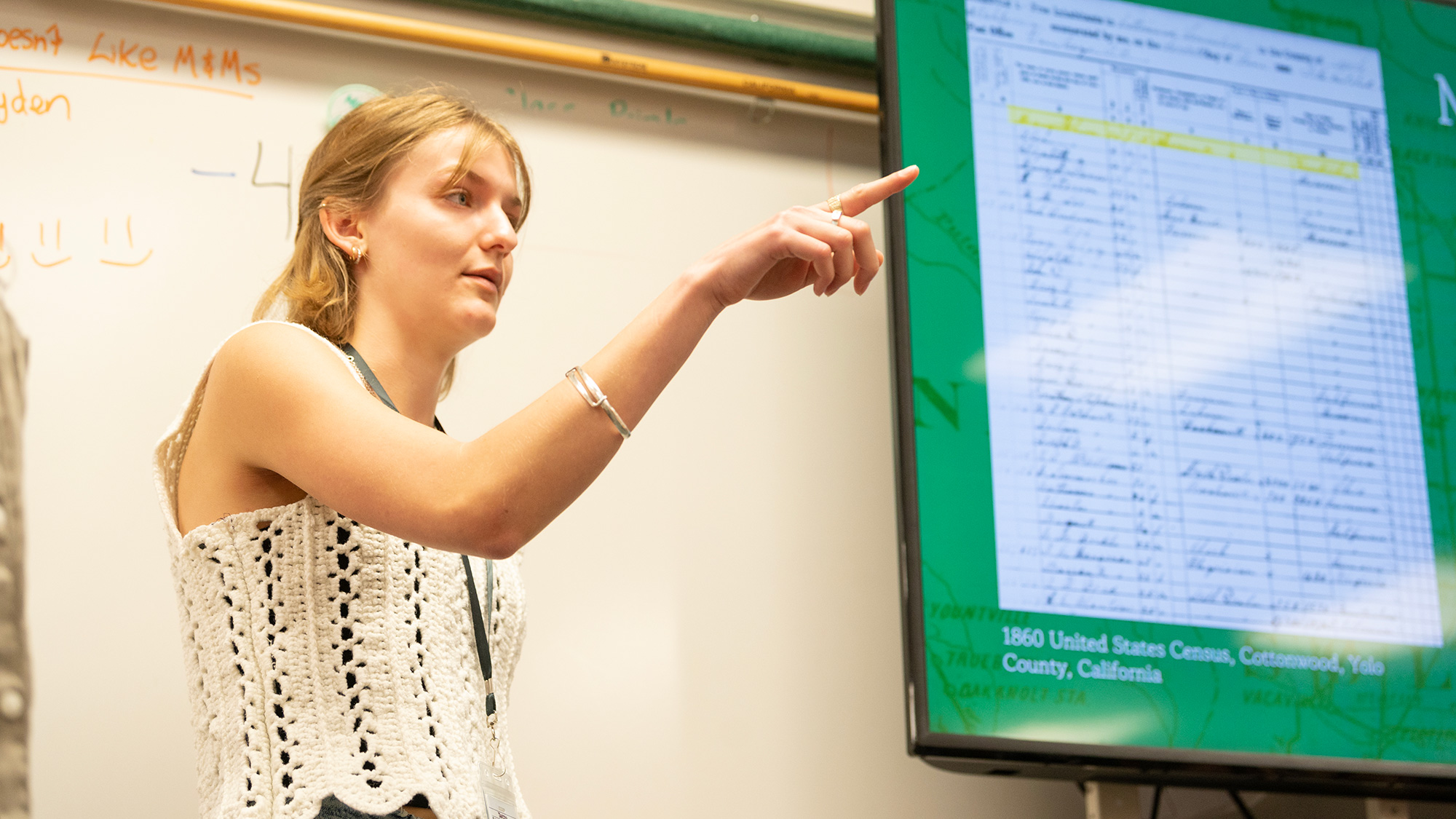
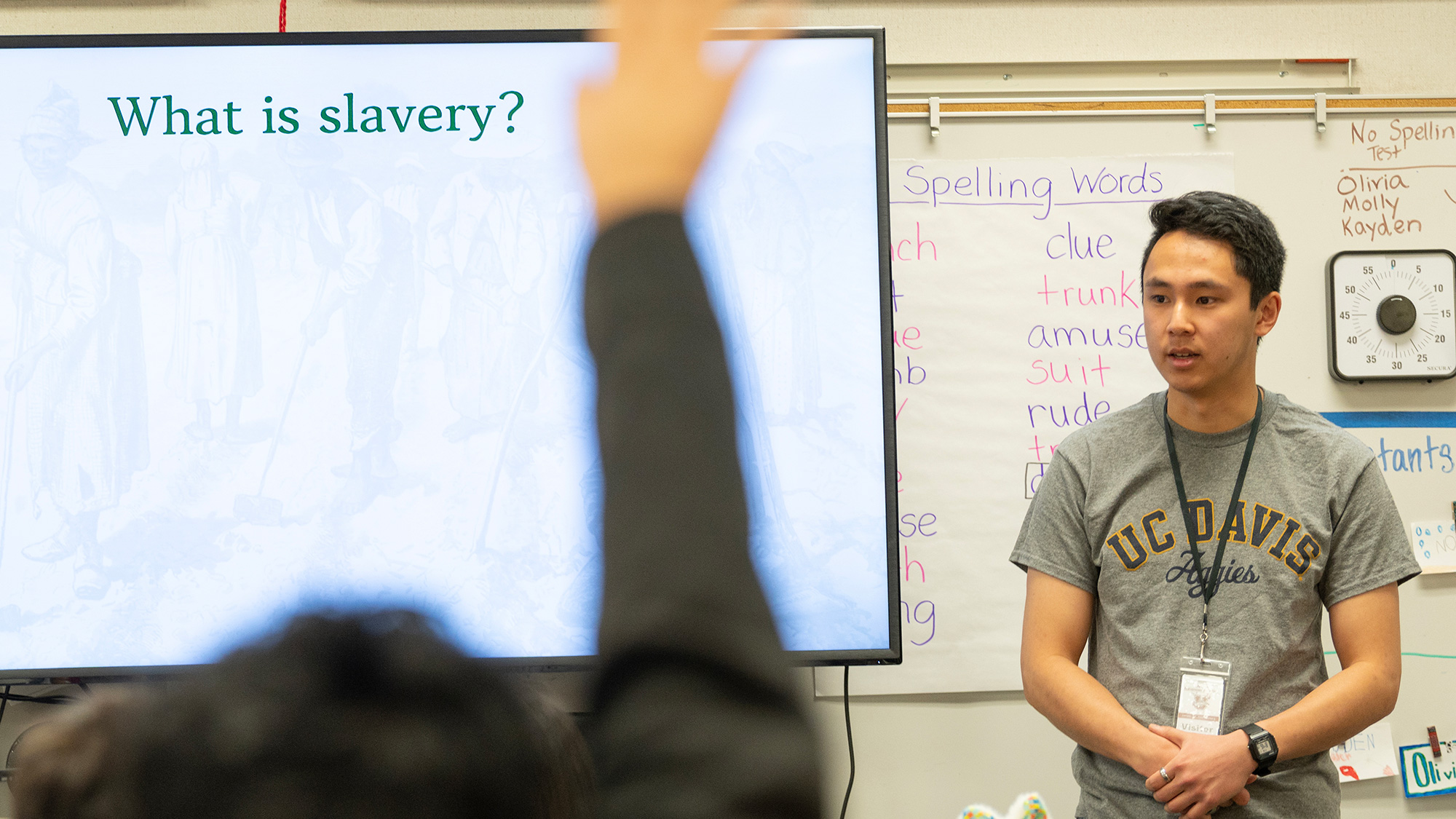
Teaching African American history in local classrooms
To offer a peek into the history of Yolo County’s Black community, Chapin, Chang and Garcia, in a recent spring classroom at Tafoya Elementary School, centered the presentation on Mary Winrow. She was an enslaved woman and mother of six brought to California from Missouri in 1856 by her enslaver, R.C. Briggs. Although California had already made slavery illegal, there was no punishment for those who held slaves, Chang and Chapin explained to a fourth-grade class.
Winrow was only able to bring two of her younger children, while leaving four others behind until they could be reunited in the 1860s, when slavery was finally outlawed after the Civil War, Chapin told students.
The UC Davis students explained that many in the Singing Club, shown in the presentation, were descendants of Winrow.
Chapin and Chang — who plan to attend UC Davis School of Education for their master’s degrees — told students about the early Black community in Woodland and asked questions of wide-eyed, engaged elementary school students.
All along, the fourth graders watched as Chapin, Chang and Garcia clicked through slides telling the story, pointing to photos and articles, and explaining each copy of a newspaper article they posted.
Children waved their hands impatiently as they raised them to ask questions — and comment — on what they were hearing. They appeared especially touched with the stories about Winrow having to leave behind some of her children in Missouri.
Tsu said that seeing how elementary school students responded to the team’s research confirmed the need to tell diverse histories, as well as the power of local history.
Tsu said she was impressed with her own students’ handling of materials and explanations of a difficult time in history.
“The students translated high-level, rigorous historical research into an accessible lesson that still had so much nuance and complexity,” she said. “They learned to teach what we found in the archives to the public and to engage and excite people of all ages about history.”
“Uncovering Diverse Histories of Yolo County” is funded by grants from the UC Davis Public Impact Research Initiative and the University of California Humanities Research Institute Engaging Humanities program in partnership with the Yolo County Archives and the California History-Social Science Project.
Media Resources
- Karen Nikos-Rose, News and Media Relations, kmnikos@ucdavis.edu, 530-219-5472
Press kit with high-resolution images. Download permitted with credit.
